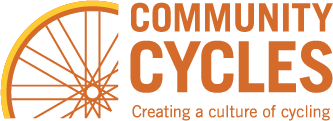I’ve been writing about how the COVID pandemic has impacted the US bicycle industry for four years. I’m tired of thinking and talking about it! COVID is over, the industry is recovering, consumers are riding in record numbers, I’M DONE!
And then, at the Bicycle Leadership Conference in March in Tucson, conference organizer PeopleForBikes (based here in Boulder) showed the graph you see here. It clearly explains and documents the impact of COVID at all three levels of the industry: supply, retail and consumer.
OK, OK, one more COVID explainer!

Unpredictable Supply and Demand
Let’s start with supply. Heading into 2020, we were in the normal state of affairs. The blue line on the graph (supplier inventory) is a bit higher than the retail sales curve, the red line. Suppliers would rather have a bit too much inventory and never lose sales. Plus there are more bike suppliers than retailers really need, so more bikes waiting to be sold.
Ideally, that blue line would be pretty level at that $300 million level, with that mid-season blip you see in mid-2019 that matches the same up-bump in the retail sales curve. However, when all heck broke loose at retail in March 2020, inventories plummeted to the lowest levels in decades… and stayed below the retail sales curve for over two years!
This gave the folks at Trek, Specialized, Giant, and on down the line WAY too much time to ponder the future. “How long is this bike sales surge going to last?” “What will sales levels look like when COVID ends?” “How many bikes over what we need can we stand to have in stock if we guess wrong?”
Leading to Higher Inventory Cost
All that pondering, plus the suppliers’ core urge to have too much inventory rather than not enough, resulted in what you see today: almost double the amount of inventory that has traditionally been necessary to support retail sales.This costs our suppliers money in two ways: The need to rent warehouse space to hold all those extra bikes, and financing costs to hold inventory for two years that they expected to sell in six months.
Looking at the retail sales curve, with all the dips and peaks and dives, it looks more chaotic than the supply curve. And ask any shop owner, 2020 and 2021 were both exhausting and exhilarating. Shops were doing twice as much business with the same staff. There was no time to hire and train anyone, so shops profited and suffered in equal measure.
The Current Situation
Things have pretty much returned to 2019 normal. Compare the red sales curve for 2019 with that from 2023. Last year sales were a bit higher than 2019, which can be accounted for by inflation. The real challenge for shops recovering from COVID is the continuing shift from brick-and-mortar to online purchasing of bikes and accessories.
Finally, check out the consumer graphs at the bottom. The number of US cyclists only increased by 3% from 2019 to 2020. If you rode around Boulder in the summer of 2020, you’d think it doubled! It turns out that the gush of participation was primarily fueled by folks who had ridden in the past and were inspired by pandemic conditions to get out and ride again, and buy a new bike if they enjoyed the experience.
There’s been a lot of industry concern about whether the COVID-inspired riders will keep riding. It’s encouraging that the number of riders continued to grow in 2021 and 2022 and has topped out at 8% higher overall than before the pandemic. Let’s hope that new, safer paths and trails coming online nationwide will keep Americans pedaling!
Ray’s Soapbox welcomes submissions from Community Cycles members and supporters. Timely cycling-related topics of local interest are given first preference. Our guidelines: Maximum length is 350 words. No name-calling or ad hominem attacks. Keep it positive, please. All submissions are subject to editing. We reserve the right to not publish submissions. Photos or other graphics are encouraged. (soapbox photo credit: Peggy Price)
Submit your idea here. We’ll help you kick your text and photo into shape.

